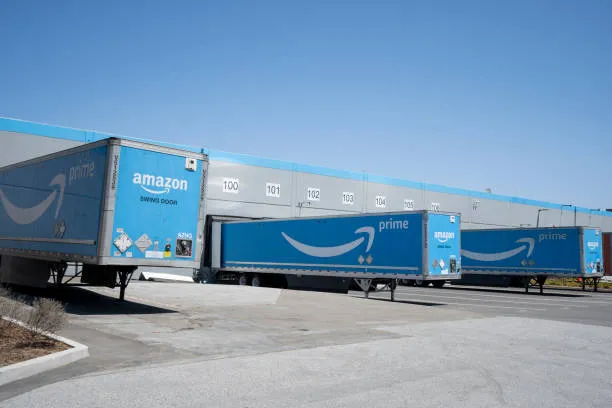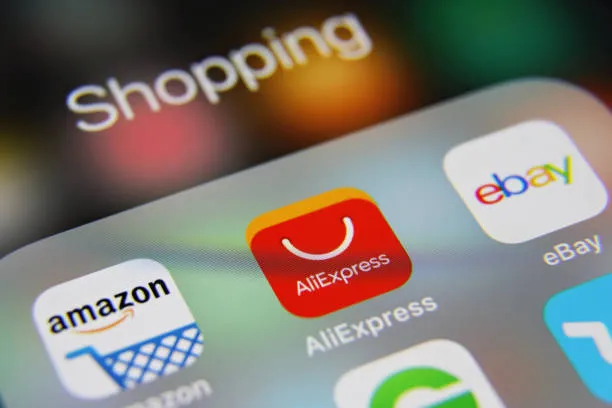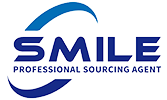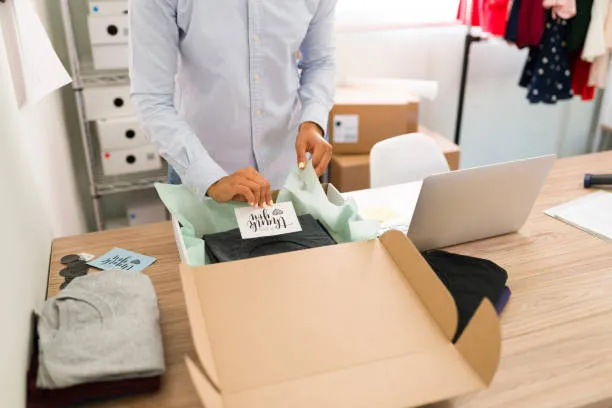Sourcing products from Alibaba and shipping them to Amazon FBA (Fulfillment by Amazon) is a strategic approach that can significantly boost your e-commerce business. Alibaba offers a vast marketplace of suppliers with a wide range of products, while Amazon FBA provides a streamlined process for storage, packaging, and shipping. This article will guide you through the entire process of sourcing suppliers from Alibaba, shipping to Amazon FBA, and the benefits of using a purchasing agent in China to facilitate this process.

Finding Suppliers on Alibaba
Before beginning the process of sourcing suppliers, it is essential for sellers to clearly define the specific types and quantities of products they wish to procure. This step is crucial as it allows for more effective filtering and identification of suitable suppliers.
Alibaba’s RFQ function helps buyers to post purchase requirements and match with suitable suppliers. Suppliers will make timely quotes according to your needs, thus establishing contact.
When selecting suppliers, you can refer to the following key indicators:
- Gold level suppliers: These suppliers have been audited by Alibaba or third-party organisations to prove their commercial and industrial capabilities.
- Certified Suppliers: These suppliers have been evaluated and certified by a third-party organisation for their corporate profile, management system, production capacity and product quality.
- Trade Assurance Suppliers: These suppliers accept payments through the Alibaba platform and provide payment protection for buyers.
After identifying a few suitable suppliers, you can take the initiative to contact them for product quotations.
Amazon FBA Preparation
Fulfillment by Amazon (FBA) is a logistics service provided by Amazon that allows sellers to send their products to Amazon’s warehouses, with Amazon being responsible for all subsequent processes such as warehousing, picking, packaging and distribution. In order to ensure that the goods can enter the Amazon warehouse smoothly and carry out effective management and distribution, sellers need to understand and comply with a series of requirements before shipment, including the packaging and labelling requirements of the goods as well as how to ship the products to the Amazon Fulfilment Centre.

1.Understanding FBA requirements
Commodity packaging: bulk goods must be individually packaged and well-packed, and the outer packaging should be sealed to avoid the goods falling apart. Sets of goods also need to be packaged in accordance with the regulations.
Labeling requirements: each piece of merchandise must be affixed to the outer packaging with a clear label, so that the entire distribution process of goods for effective tracking. These labels include product barcode FNSKU, country label, overweight label, battery identification, etc.
Size and weight restrictions: Cartons must not exceed 63.5cm in length, width and height and must have a different FNSKU for each classification type.
2.Labelling and Packaging Requirements
FBA Label: Sellers need to put the FBA label on the goods, which is the key to confirm the identification of the outer box of the goods when receiving the goods in the Amazon warehouse.The FBA label usually covers the original barcode of the goods, which is easy for Amazon system to identify and manage.
Other necessary labels: goods exported to the United States also need to be affixed with the ‘Made in China’ label, otherwise it will be rejected. In addition, some items may need additional labelling, such as battery labelling.
3.Shipping Products to Amazon Fulfilment Centre
Create a shipment plan: before shipping to an Amazon operations centre, sellers need to draw up a plan for inbound merchandise and create merchandise information, including the items expected to be sent, the type of labels to be used, and so on.
Inspect and prepare merchandise: before shipping, sellers need to check the quality and integrity of the merchandise to ensure that it complies with Amazon’s regulations.
Sorting and Packing: Sort and pack the items by type and quantity according to Amazon’s requirements, making sure that each classification type has a different FNSKU and that each item needs to have an easy-to-scan barcode or label.
Through the above steps, sellers can ensure that their goods can enter the Amazon warehouse smoothly and enjoy the efficient and reliable logistics service provided by Amazon.
How to Source from Alibaba and Ship to Amazon FBA

Step 1: Identify Your Product
Begin by identifying the product you want to sell. Conduct thorough market research to ensure there is a demand for the product on Amazon. Utilize tools like Jungle Scout, Helium 10, or AMZScout to analyze competition, pricing, and potential profitability.
Step 2: Search for Suppliers on Alibaba
Visit Alibaba’s website and search for the product you have identified. Use relevant keywords and apply filters to narrow down your search. Evaluate potential suppliers based on:
- Product Quality: Review product descriptions, specifications, and images.
- Supplier Reputation: Check ratings, reviews, and transaction history.
- Certification and Compliance: Ensure the supplier meets industry standards and required certifications.
Step 3: Contact Suppliers
Reach out to multiple suppliers to compare quotes, negotiate prices, and inquire about product details. Request samples to evaluate the product quality firsthand. Use Alibaba’s messaging platform for organized and transparent communication.
Step 4: Verify the Supplier
Perform due diligence to verify the legitimacy of the supplier. This includes:
- Checking Business Licenses and Certifications: Request and verify official documents.
- Factory Visits: If feasible, arrange a visit to the factory or hire a third-party inspection service.
- Customer Feedback: Read reviews and testimonials from previous buyers.
Step 5: Place Your Order
Once you have selected a reliable supplier, place your order. Ensure all details are clearly agreed upon, including:
- Product Specifications: Confirm dimensions, materials, and features.
- Payment Terms: Negotiate favorable terms, such as a small deposit with the balance due upon delivery.
- Production Timeline: Set a realistic timeline for production and delivery.
Step 6: Arrange Shipping to Amazon FBA
Shipping your products to Amazon FBA can be managed either through a freight forwarder or a purchasing agent:
- Freight Forwarder: Freight forwarders manage the logistics of shipping your products from China to Amazon FBA warehouses. They handle tasks such as booking cargo space, managing documentation, and coordinating with shipping companies.
- Purchasing Agent: A purchasing agent can provide end-to-end service, including sourcing, quality inspection, shipping, and customs clearance. They ensure compliance with Amazon FBA requirements and handle any issues that arise during the process.
Types of Purchasing Agents in China
Understanding the different types of purchasing agents in China is essential for efficient and effective sourcing. When sourcing suppliers, it’s crucial to know which type of purchasing agent will best meet your needs. Purchasing agents can be categorized into four main types:
- Individual Freelance Agents: These are solo operators who offer personalized services at relatively low fees. They are suitable for small businesses or individual sellers looking for a hands-on approach.
- Small Sourcing Companies: These companies have a few employees and provide a balance between personalized service and professional expertise. They cater to medium-sized businesses and offer more resources compared to freelance agents.
- Large Sourcing Agencies: Large agencies have extensive resources, multiple employees, and a wide network of suppliers. They are ideal for large businesses with substantial order volumes, requiring comprehensive services for sourcing suppliers.
- Specialized Agents: These agents focus on specific product categories or industries, offering deep expertise and knowledge in their niche. They are beneficial for businesses looking for specialized products with stringent quality requirements.

Why Choose China Sourcing Agency Smilepurchasing to Finish It?
Using a China Sourcing agent offers numerous advantages:
- Localized Procurement Expertise:Teams stationed locally in China and globally provide in-depth knowledge of suppliers and markets for tailored localization solutions.
- Streamlined Sourcing Process:Helps customers quickly identify qualified suppliers and optimize logistics for time savings.
- Cost-Efficient Supply Chain:Leverages extensive supplier networks to negotiate the best pricing and design the most cost-efficient supply chain, lowering overall procurement costs.
- Rigorous Supplier Audits:Ensures product quality and business integrity through rigorous supplier audits, minimizing customers’ sourcing risks.
- QA Experts:Smilepurchasing’s QA experts conduct on-site product inspections at various production stages to fully safeguard quality.
- Specialized After-Sales Support:Beyond import/export administration, Smilepurchasing provides specialized after-sales support services.
Sourcing products from Alibaba and shipping them to Amazon FBA can be a lucrative venture if done correctly. Understanding the different types of purchasing agents in China and following a structured sourcing process can help ensure the quality and reliability of your products. Choosing a reputable China purchasing agent can streamline the process, providing expertise, quality control, and efficient logistics management. With the right approach and reliable partners, you can successfully source from Alibaba and grow your Amazon FBA business. By leveraging the expertise of purchasing agents and following best practices, you can navigate the complexities of international sourcing and focus on scaling your e-commerce operations.



